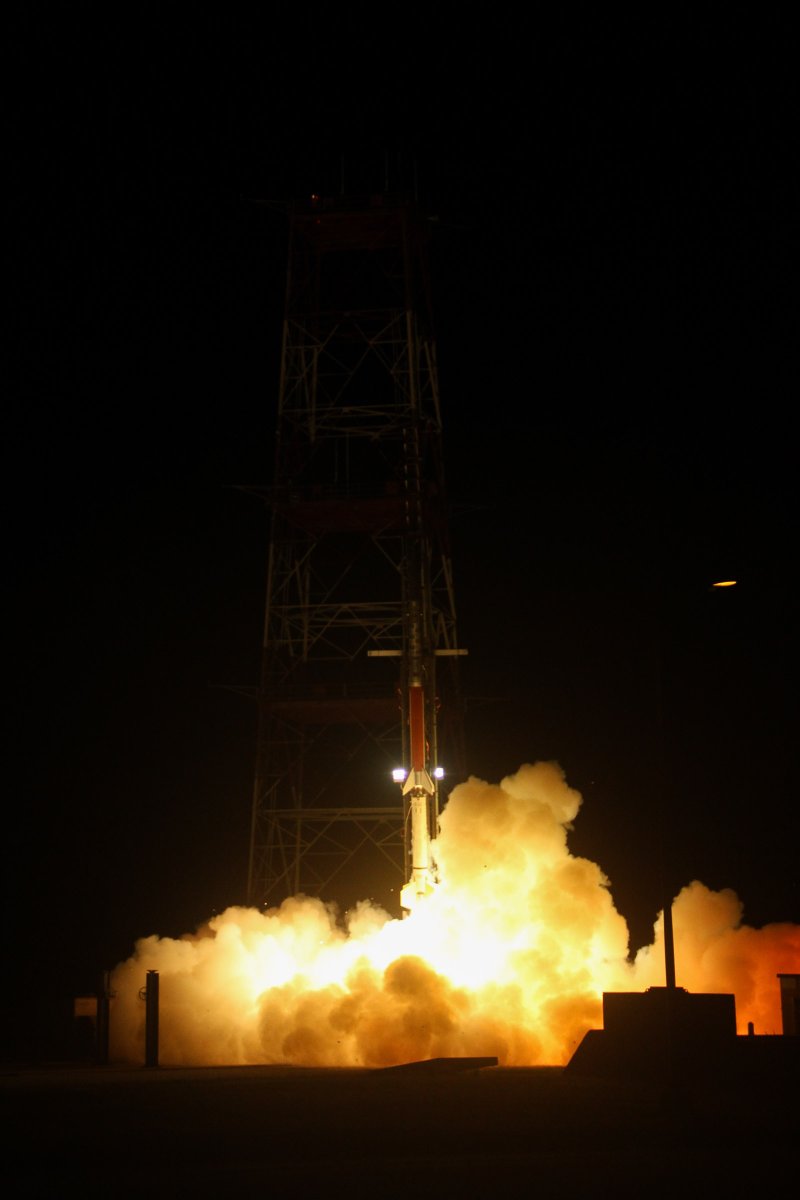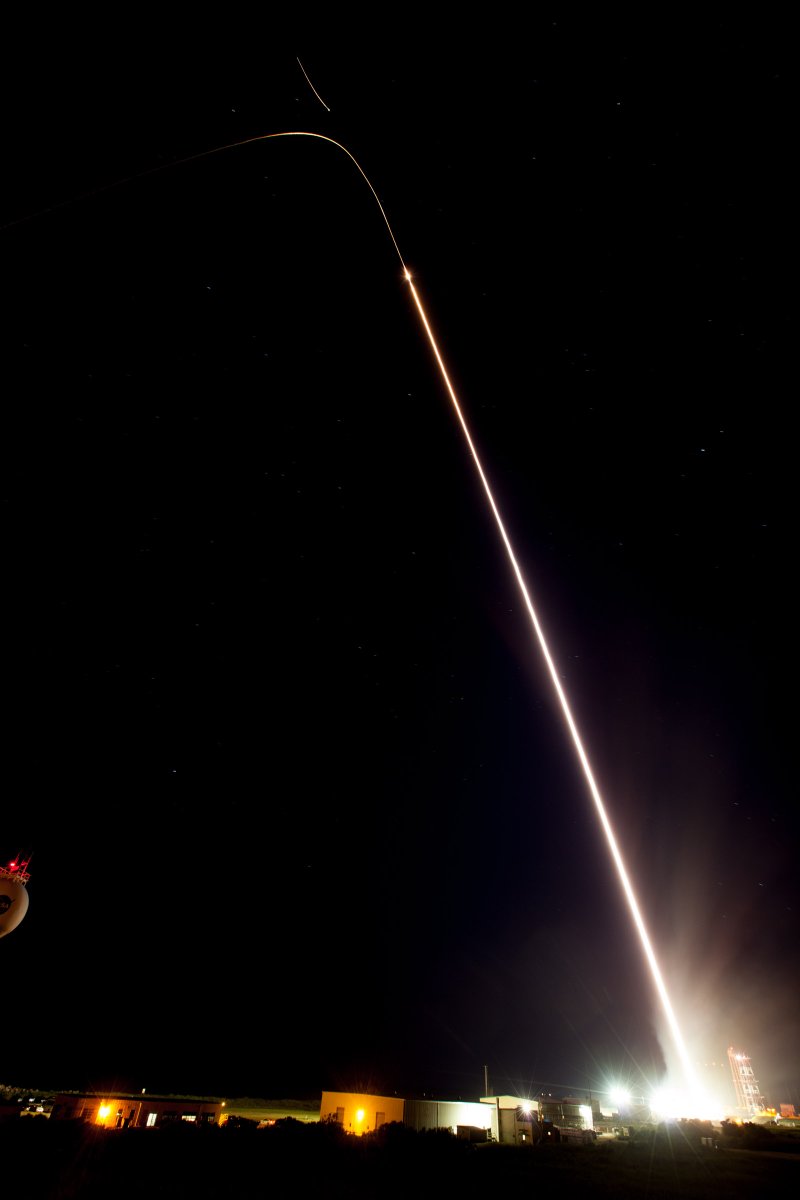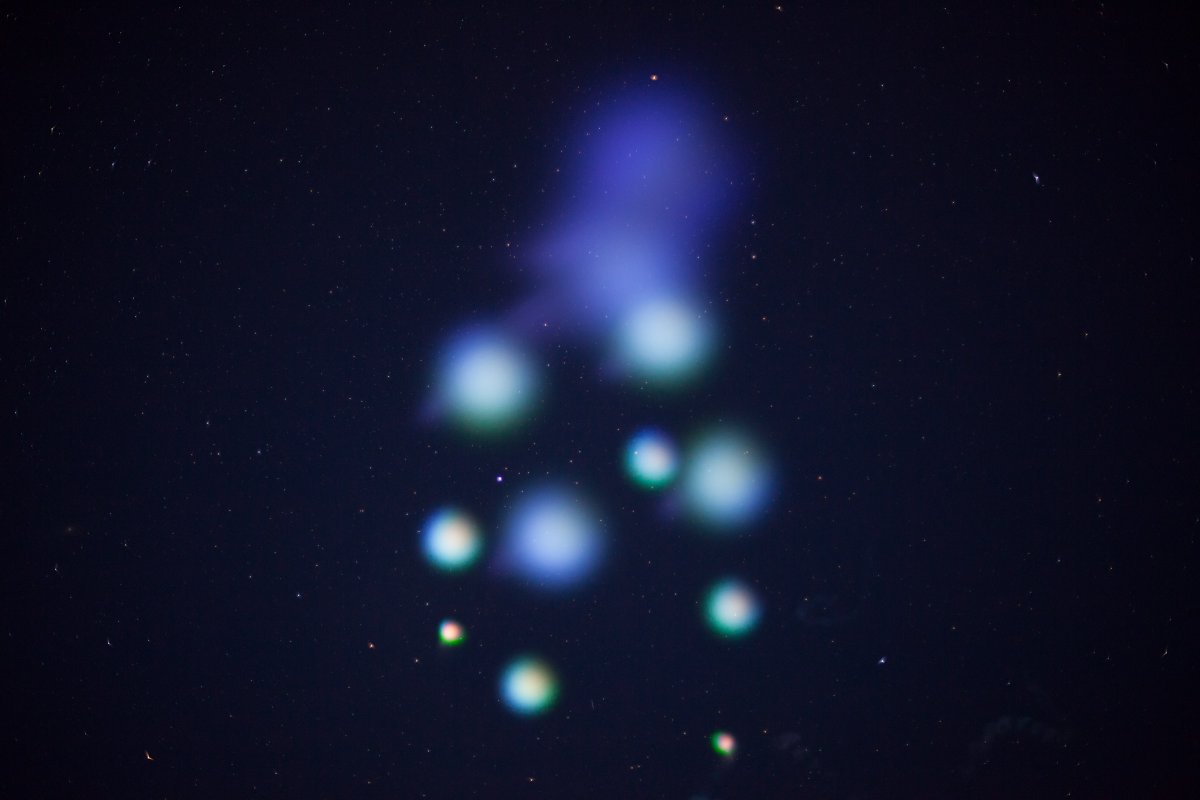July Fourth Comes Early: NASA Sounding Rocket Releases Colorful Morning Cloud Show (Photos, Video)
A NASA sounding rocket launched early this morning and lit up the skies over the U.S. East Coast with colorful clouds, ringing in an early July Fourth celebration.
The launch of the Terrier-Improved Malemute two-stage sounding rocket had been repeatedly rescheduled, but the rocket finally got its chance at 4:25 a.m. EDT (0825 GMT) today (June 29). The rocket lifted off from NASA's Wallops Flight Facility in Virginia, and its flight lasted about 8 minutes.

About 4 to 6 minutes into takeoff, 10 canisters released barium, strontium and cupric oxide, which interacted with each other to form colorful vapor. Scientists could use the red and blue-green artificial clouds that formed to track the movement of particles in Earth's ionosphere, which is in its upper atmosphere. They were visible along the mid-Atlantic coastline from North Carolina as far north as New York, and could be seen as far west as Charlottesville, Virginia, according to NASA. (NASA Wallops reported cloud views as far as Staten Island, NY and Outer Banks, NC.)

"Two-stage" refers to the method of rocket launch where the first stage achieves liftoff from Earth's surface, and those propellants are discarded soon after to reduce the weight of the rocket. At that moment, the second, upper stage fires to continue the journey. The word "sounding" is a borrowed nautical term meaning the rocket is intended to take measurements.

The ionosphere that the sounding rocket is looking to study is the layer of Earth's atmosphere that is ionized (hence the name) by solar and cosmic radiation. When an atom or molecule is called an ion, it simply means that the particle does not have the normal number of electrons — instead, it carries a negative or positive charge.
Editor's note: If you caught an amazing photo of the launch or artificial clouds and you'd like to share it with us and our partners for a story or image gallery, send images and comments in to managing editor Tariq Malik at spacephotos@space.com.
Follow Doris Elin Salazar on Twitter @salazar_elin. Follow us @Spacedotcom, Facebook and Google+. Original article on Space.com.
Sign up for the Live Science daily newsletter now
Get the world’s most fascinating discoveries delivered straight to your inbox.










